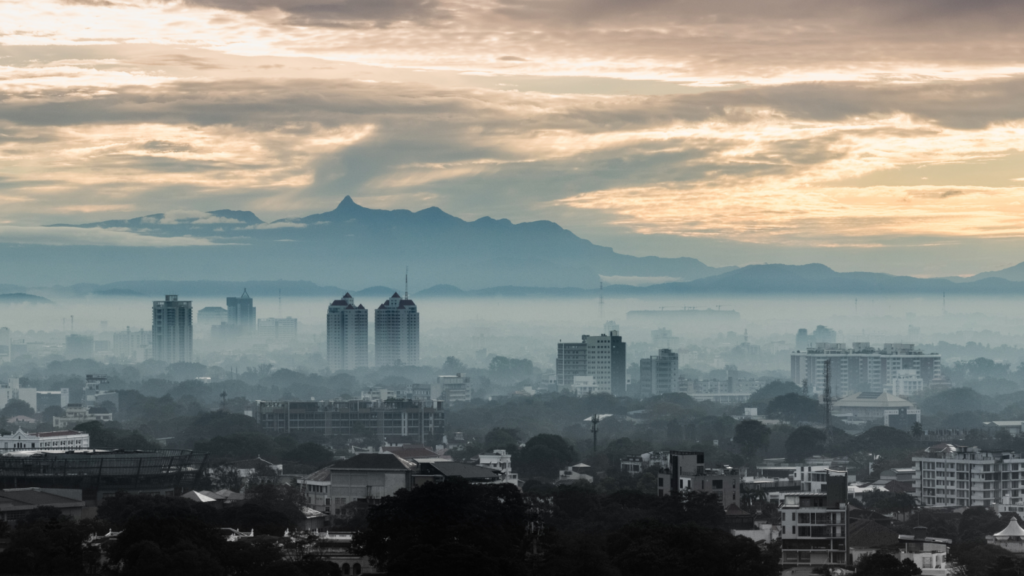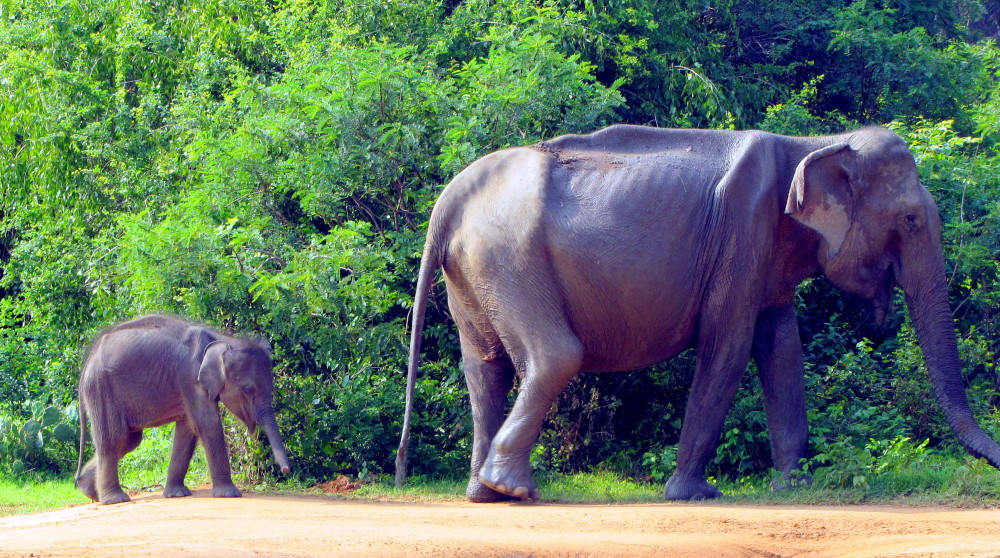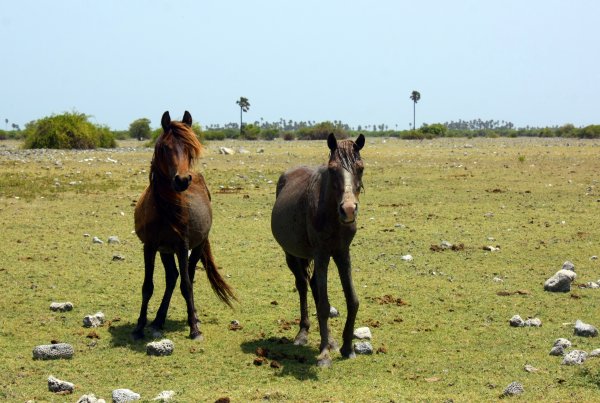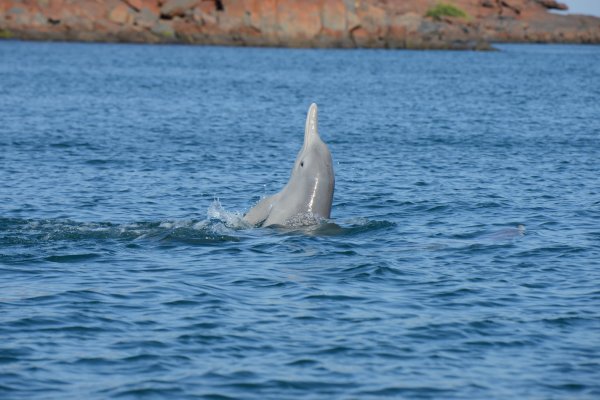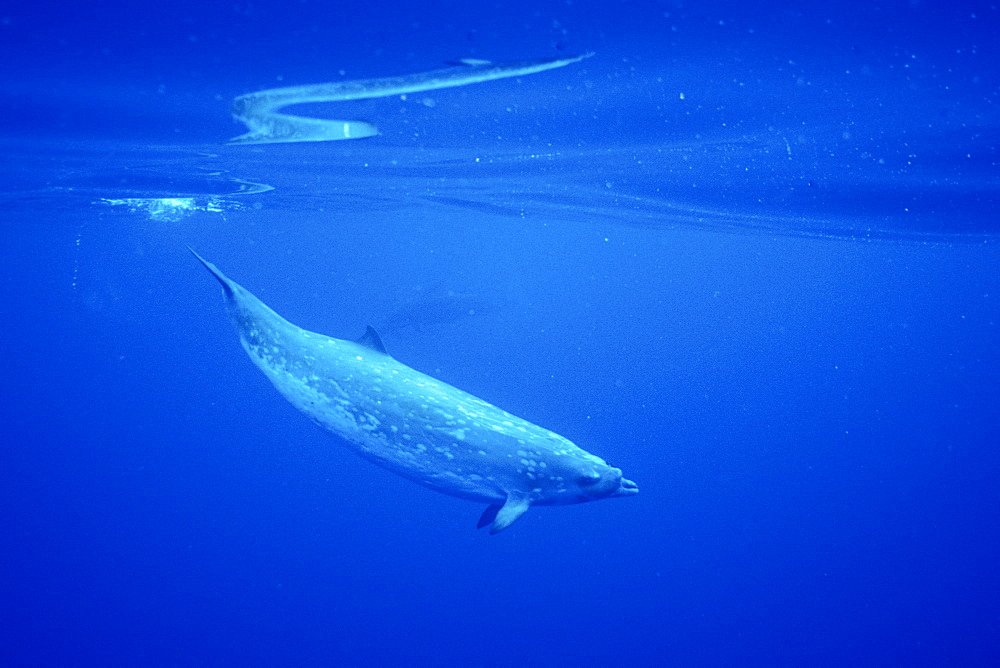
The tropical waters of Sri Lanka are home to 29 species of marine mammals, five of which are large whale species. According to marine biologist Dr. Asha de Vos, who runs Oceanswell, a marine conservation research, and education organisation, the rest are large dolphins, small dolphins, and the dugong. Technically, Dr. Asha said, the larger dolphins are also called whales, as evidenced in the list below, of the five ‘beaked’ whale species inhabiting Sri Lankan waters. Beaked whales are toothed whales of the family Ziphiidae, notable for their elongated ‘beaks’. They are one of the least known groups of mammals because of their deep-sea habitat and small numbers. What information is gathered on these species is through strandings on beaches and through painstaking fieldwork, with de Vos commenting that beaked whales are in general considered elusive and difficult to see. Here is a list of the five beaked whales spotted in Sri Lankan waters.
Cuvier’s beaked whale
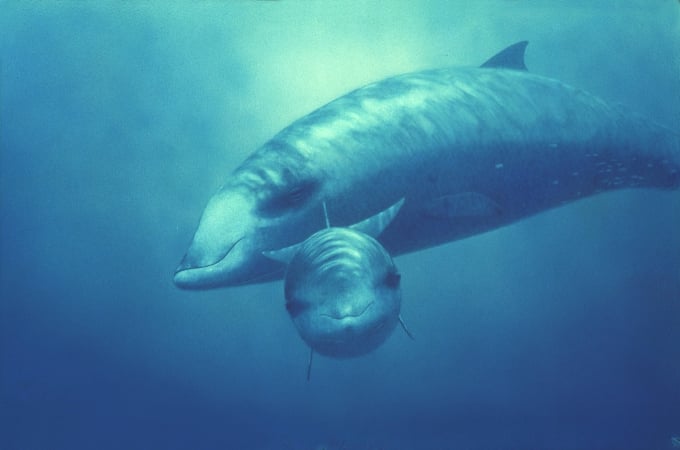
The Cuvier’s beaked whale is the most widely distributed of the elusive beaked whales. Image courtesy whaleopedia.
Cuvier’s beaked whale, Ziphius cavirostris, also known as the ‘goose-beaked whale’, is the most widely distributed and, therefore, the most frequently seen of all the beaked whales. It was named after French anatomist Georges Cuvier, who first described the species in 1823.
This beaked whale is a deep diver; diving to record depths of over 2,000 metres and being able to stay underwater for more than two hours. It feeds on species of squids and deep-sea fish, and with an approximate figure of 100,000, is listed on the IUCN Red List of Threatened species as being of ‘Least Concern’.
Ginkgo-toothed beaked whale

The Ginkgo-toothed beaked whale is so called for his unusual ‘ginkgo’ leaf-shaped teeth. Image courtesy whaleopedia.
Little is known of the Ginkgo-toothed beaked whale, Mesoplodon ginkgodens, so named for its unusual dual teeth shaped in the form of a ‘ginkgo’ leaf. The Ginkgo-toothed beaked whale has been spotted in the seas off Japan, in the Pacific and Indian oceans, but little information is available on its behaviours and habits.
The Ginkgo-toothed beaked whale is typically midnight black in colour, with a lighter underside. Females do not display the ‘Ginkgo’ shaped tooth. The IUCN Red List of Threatened Species lists this species as ‘Data Deficient’ due to a dearth of information.
Blainville’s beaked whale
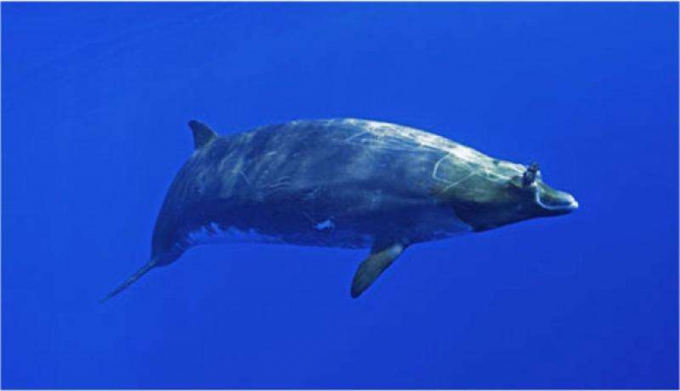
Blainville’s beaked whale is also known as the ‘dense-beaked’ whale. Image courtesy phys.org
Blainville’s beaked whale, Mesoplodon densirostris, is also known as the dense-beaked whale on account of its rather large jaw bone. The species is named after French zoologist Henri de Blainville, who first described it in 1817.
The Blainville’s beaked whales can be spotted in tropical and warm waters across all oceans and are typically seen in groups of three to seven. They feed on squid and have been known to dive for over 20 minutes before resurfacing for air.
Deraniyagala’s beaked whale
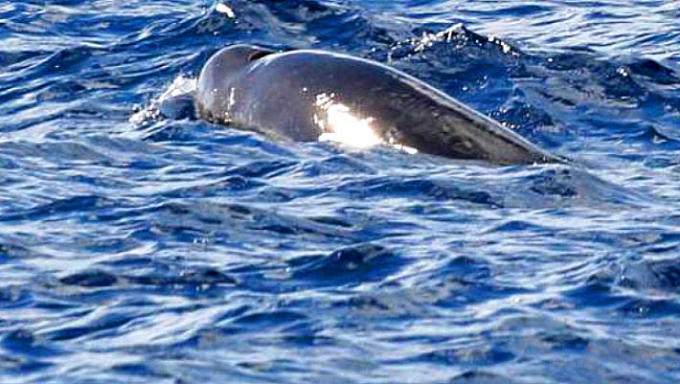
Deraniyagala’s beaked whale was identified by Dr. P.E.P Deraniyagala in 1963. Image courtesy scinews.com
Deraniyagala’s beaked whale, also known as Mesoplodon hotaula, was first identified in 1963 by Dr. P.E.P Deraniyagala of the National Museum of Ceylon. This beaked whale was initially confused with the Ginkgo-toothed beaked whale, but marine biologist later distinguished between the two species.
Little is known of the Deraniyagala’s beaked whale, which was previously only positively identified via seven strandings that have occurred in Seychelles, Maldives, Sri Lanka, Gilbert Islands, Kiribati, and Line Islands. It is thought to feed on squid and deep-sea fish.
Longman’s beaked whale
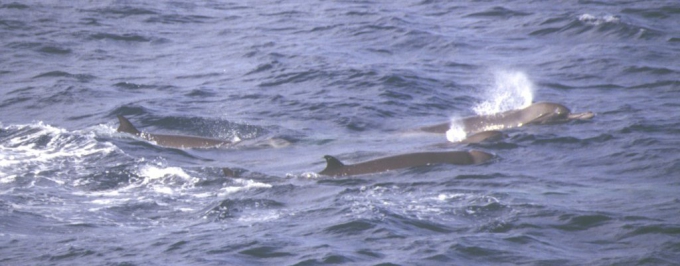
The Longman’s beaked whale is also known as the ‘tropical bottlenose whale’. Image courtesy us.whales.org
Longman’s beaked whale, Indopacetus pacificus, also known as the ‘tropical bottlenose whale’ and the ‘Indo-Pacific beaked whale’, was initially described by H. A. Longman in 1926. This whale species, which typically travel in large groups or ‘pods’, has a distinct beak, with a large lower jaw which sticks out beyond the upper jaw.
Until recently, this species was identified via two skulls found in Africa (in 1955) and Australia (in 1882) and were thought to be one of the rarest cetaceans. The species has two small oval-shaped teeth at the tip of the jaw, thought to be present in males only. It is listed on the IUCN Red List of Threatened Species as ‘Data Deficient’.
As pointed out in our previous article on the five large whale species spotted in Sri Lankan waters, marine mammals have been spotted by de Vos and her team in waters all around the island, although tourists tend to converge in Mirissa, Kalpitiya, and Trinco because deep waters closer to the shore offer greater accessibility to these creatures. For as long as the waters around Sri Lanka meet these mammals requirements, the whales, dolphins and the dugong will continue to inhabit Sri Lankan waters. While there are complications—carcasses of blue whales have washed ashore in several parts of the island, the result of collision with ships; a study by a team of researchers in 2014 and 2015 recommended that if shipping traffic crossing the Indian Ocean was moved five nautical miles further south than present, the risk to blue whales could be reduced by 95%—de Vos and her team, who have been working to mitigate the impact of ship strikes on whales since 2012, are also in the process of putting together an actionable document with which to engage the government on this matter, making Sri Lankan waters a safer home for these gentle giants.
Cover: Mesoplodon densirostris, or Blainville’s beaked whale. Image courtesy robertharding.com



